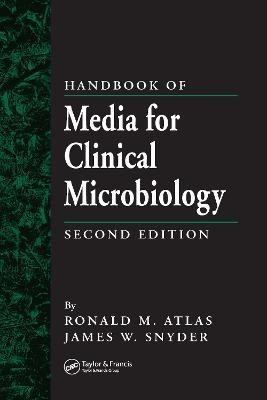Handbook of Media for Clinical Microbiology(English, Hardcover, Snyder James W.)
Quick Overview
Product Price Comparison
While evolving molecular diagnostic methods are being heralded for the role they will play in improving our ability to cultivate and identify bacteria, fungi, and viruses, the reality is that those new methods are still beyond the technical and financial reach of most clinical laboratories. Most clinical microbiology laboratories still rely upon culture methods for the identification of microorganisms of medical importance. The newest edition of the Handbook of Media for Clinical Microbiology addresses the needs of clinical microbiology laboratories and infectious disease researchers. Authored by Ronald Atlas and James Snyder, who over the years have built solid reputations among researchers for their exceptionally reliable media handbooks, this volume gives microbiologists in clinical and medical laboratories the reference they need to quickly and effectively deal with the modern challenges shaping the field. Organized for a fast-paced environment, this fully updated Second Edition provides clinical diagnostic laboratories with an easy-to-use reference for those routine and specialized media employed in the cultivation of pathogenic bacteria, fungi, and viruses. Almost 1,650 media are described in this edition, among them many newly developed media designed for the rapid detection and identification of disease-causing microorganisms, including those responsible for emerging and re-emerging infectious diseases. Describes media designed to cultivate and identify Escherichia coli O157:H7, methicillin-resistant Staphylococcus aureus, and vancomycin-resistant enterococci Includes chromogenic or fluorogenic substrates that permit the rapid detection of specific pathogens critical to the diagnosis of individuals with specific infectious diseases The Handbook provides a compilation of the formulations, methods of preparation, and applications for media used in the clinical microbiology laboratory. Listings are alphabetical, and each inc


